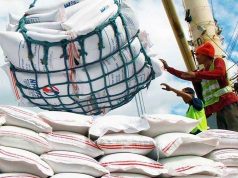ELECTRIC cooperatives recorded an 11% increase in power sales during the first quarter to 4,924 gigawatt-hours (gWh), about half of which was consumed by the residential sector, the National Electrification Administration (NEA) said on Wednesday.
Residential consumers used 2,506 gWh or 51% of the total sales during the first three months. The commercial sector was the second-biggest user with 1,187 gWh or 24%.
“These data show an upward trend in the demand for electricity in the rural areas, a positive surge in economic activity, including those in production, manufacturing and consumer trade being catered to and aptly provided by electric cooperatives in the past year,” said NEA Administrator Edgardo R. Masongsong in a statement.
He said the increase in electricity sales reaffirmed the significance of the electric cooperatives in driving rural economic growth. The state-run agency is mandated to energized the country’s rural areas.
In its report, NEA said data show electricity sales to the industrial sector reached 881 gWh or 18% of the total, while power sold to public buildings was at 268 gWh or 5% of the total. Other users accounted for 82 gWh or 2%.
Of the total sales, 2,371 gWh or 48% was transacted in Luzon, 1,164 gWh or 24% in the Visayas, and 1,389 gWh or 28% in Mindanao.
“These numbers, while showing a direct correlation between the services of the electrification sector and national growth, also validate our contention that ECs drive the rural economy and continue to immensely contribute to the country’s impressive numbers, despite challenges, as far as economic fundamentals are concerned,” Mr. Masongsong said.
NEA said to date, its partnership with 121 electric cooperatives has energized more than 12 million households across the country.
“About 19,740 sitios, however, still do not have access to electricity. Of these, 1,702 sitios are identified as ‘off-grid’ found mainly in Mindanao with 1,003, followed by Visayas with 557, and Luzon with 142,” it said. — Victor V. Saulon



